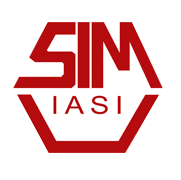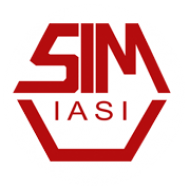Volume 71(75), Issue 2 – download
CHARACTERIZATION OF LASER-TEXTURED SURFACES – A REVIEW
PETRONELA-DANIELA RUSU (OSTAHIE)*
“Gheorghe Asachi” Technical University of Iaşi, Faculty of Machine Manufacturing and Industrial Management, Iași, Romania
Received: December 15, 2024
Accepted for publication: April 30, 2025
Pages: 9-28
Abstract. Laser surface texturing (LST) is an advanced and highly versatile technique for tailoring the surface properties of biopolymeric materials, with broad applications in biomedical, automotive, and industrial domains. This review investigates the influence of LST on the mechanical, tribological, thermal, and wettability characteristics of both polymeric and biopolymeric surfaces, with the overarching goal of enhancing their performance and durability. The methodology centers on laser ablation, employed to generate microstructures with various geometries, while optimizing critical processing parameters such as laser fluence, scanning speed, and pulse duration. The review encompasses a wide range of materials, including PLA, PHA, PEEK, HDPE, and PET, examining their responses to laser-induced surface modifications. Experimental investigations include mechanical tests (microhardness, tensile strength), tribological assessments (coefficient of friction, wear resistance), thermal analyses (DSC, TGA), and wettability measurements (contact angle). In addition, the impact of different texturing patterns‒such as linear, hexagonal, and circular‒is evaluated to determine their specific effects on material behavior.
Keywords: biodegradable polymer; surface texturing, wettability, degradation, friction coefficient, wear resistance.
THE INFLUENCE OF FDM TECHNOLOGY PARAMETERS UPON PRINTING ONTO TEXTILE SUBSTRATES
RADU FIRICEL*, SAVIN DORIN IONESI and EMIL-CONSTANTIN LOGHIN
“Gheorghe Asachi” Technical University of Iaşi, Faculty of Industrial Design and Business Management, Iași, Romania
Received: March 1, 2025
Accepted for publication: June 7, 2025
Pages: 29-42
Abstract. The integration of additive manufacturing into textile and fashion engineering has enabled the development of hybrid material systems and novel fabrication strategies. Among the various 3D printing technologies, Fused Deposition Modeling (FDM) is widely utilized due to its accessibility, material compatibility, and the extensive control it offers over process parameters. While prior research has primarily focused on optimizing interlayer bonding and structural performance in conventional FDM applications, the direct deposition of polymers onto textile substrates introduces a distinct set of challenges, particularly in achieving reliable adhesion to flexible, porous surfaces. Existing literature has predominantly examined this issue from the perspective of textile properties‒such as weave structure, fiber composition, and surface topography‒while considerably fewer studies have addressed the role of printing parameters. This review consolidates and critically evaluates current research that investigates the influence of FDM process settings‒including nozzle and bed temperature, nozzle-to-substrate distance, print speed, flow rate, and cooling conditions‒on the adhesion performance of polymer–textile interfaces. The review aims to identify recurring trends, highlight unresolved challenges, and outline promising directions for future investigations in this rapidly evolving area.
Keywords: 3D printing; settings; parameters; adhesion; textiles; fabric.
ADVANCED TITANIUM ALLOYS FOR MEDICAL AND INDUSTRIAL USE
ANDREI PRUTEANU1, MĂDĂLINA SIMONA BĂLȚATU1,*, ANDREI VICTOR SANDU1,2 and PETRICĂ VIZUREANU1,2
1“Gheorghe Asachi” Technical University of Iași, Faculty of Materials Science and Engineering,
Iași, Romania
2Academy of Romanian Scientists, 54 Splaiul Independenței St., Sect. 5, 050094 Bucharest, Romania
Received: January 22, 2025
Accepted for publication: March 15, 2025
Pages: 43-61
Abstract. This article aims to discuss ways of improving the properties of titanium alloys, exploring various strategies to enhance strength of the material, the corrosion resistance and most importantly the biocompatibility, meaning a particular focus on mechanical performance, structural integrity, and biocompatibility, suited for orthopedic and dental implants. It examines the effects of different alloying elements and the impact titanium’s phases have on these properties. Additionally, the paper discusses production methods ranging from extraction to surface treatments and includes structural characterization techniques, such as mechanical testing, corrosion resistance evaluation, and microstructure analysis. Titanium and its alloys are highly valued for their strength-to-weight ratio, exceptional corrosion resistance, flexibility, and biocompatibility, making them suitable for a diverse array of applications, which will be detailed further in this work. Future directions emphasize the use of 3D engineering for the development of customized implants, surface modifications to enhance biocompatibility, and the exploration of biodegradable alloys.
Keywords: Titanium Alloys, Biomaterials, Medical Devices, Alloy Characterization, Biocompatibility, Mechanical Testing, Alloying Elements.
ADVANCED OPTOELECTRONIC TECHNOLOGIES FOR IN-SITU ANALYSIS OF METALLIC WELD BEADS: COMPARISON WITH CLASSICAL EDS METHODS
FLORIN-SORIN TODIRICĂ1, MIHAI-ADRIAN BERNEVIG1, SONIA AMARIEI2, GHEORGHE GUTT2 and NICANOR CIMPOEȘU1,*
1“Gheorghe Asachi” Technical University of Iaşi, Faculty of Materials Science and Engineering, Iași, Romania
2“Ștefan cel Mare” University of Suceava, Suceava, Romania
Received: May 1, 2025
Accepted for publication: June 10, 2025
Pages: 63-69
Abstract. This paper presents the results of a study on the development of portable, modular optoelectronic equipment for the in situ qualitative and quantitative analysis of metallic weld beads. Compared to traditional analysis methods, such as EDS spectrometry, the proposed systems offer superior accuracy, real-time analysis capabilities, portability, and energy autonomy. Three patented devices are presented: a portable device without an excitation source, a portable device with a laser excitation source, and a complex modular spectromicroscope. A comparative evaluation was conducted to highlight the advantages of these devices in terms of sensitivity, application flexibility, and integration into production processes.
Keywords: metal welding; light element detection; spectral characterization.
WORK ENVIRONMENT: A FACTOR THAT INFLUENCES EMPLOYEE PERFORMANCE
FLORENTINA BÎRLĂDEANU (CĂS. EFTINCĂ)*, SILVIA AVASILCĂI, ADRIANA BUJOR and ANA MARIA DOBRANICI (CĂS. DUMITRESCU)
“Gheorghe Asachi” Technical University of Iaşi,
Faculty of Industrial Design and Business Management, Iași, Romania
Received: March 1, 2025
Accepted for publication: June 5, 2025
Pages: 71-82
Abstract. The work environment consists of all the factors that surround employees and the space in which they perform their tasks. Today’s workers seek more than just a well-paying job; they desire a meaningful workplace with a positive culture that promotes a balance between their professional and personal lives. They also value opportunities for personal and professional growth, along with a sense of appreciation and respect. A healthy work environment is essential in any organization, as it brings advantages that directly and indirectly benefit both the company and its employees. This paper aims to provide a thorough examination of the various work environments present in different organizations. By utilizing an exploratory research approach, the study seeks to identify the work environments that employees prefer and those that companies adopt, which have resulted in enhanced human resource performance and positively impacted organizational.
Keywords: Work environment, working conditions, productive work, job satisfaction, professional life.


